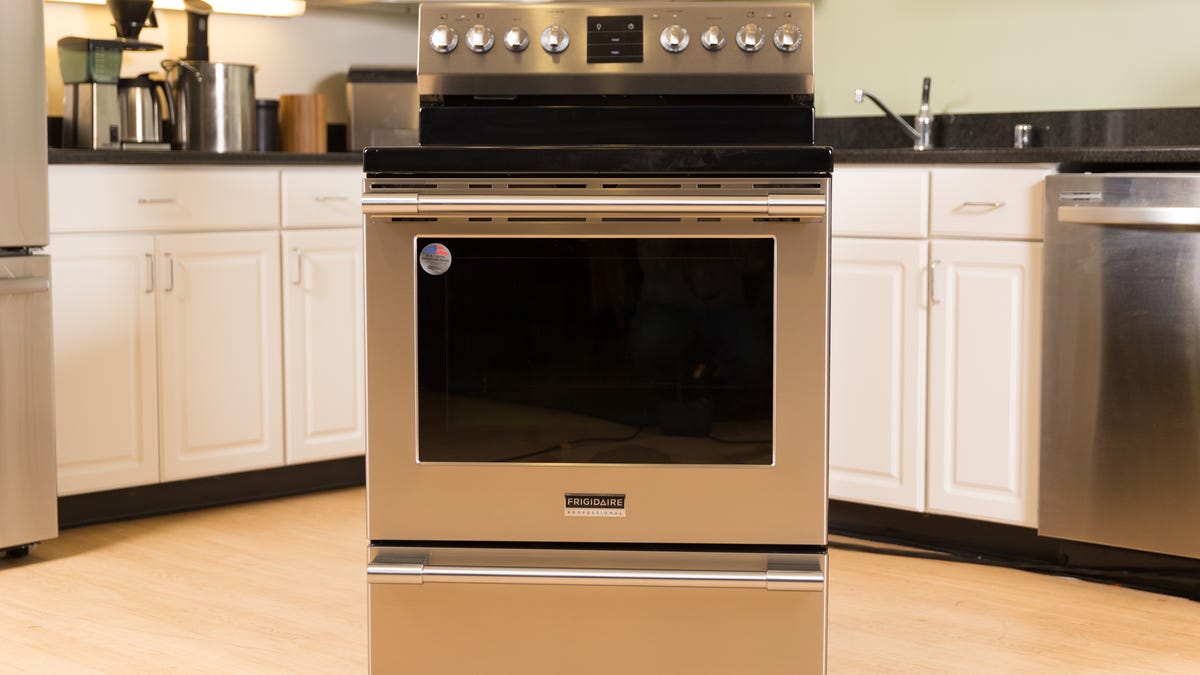Is your oven cooking evenly? Here's how to find out
If your oven isn't cooking evenly, there are a few quick tests and fixes you can try before calling a professional.

You diligently follow the cooking instructions and preheat your oven, but when the dish comes out, some parts are overcooked while others are still raw.
Sound familiar? Your oven might not be distributing heat evenly.
Here's how to put your oven to the test before calling a professional and spending hundreds on something you can fix yourself for just a few dollars.
Check the calibration first
If the edges of foods are burning while the center is practically uncooked, it doesn't necessarily mean your oven isn't cooking evenly. It could also be explained by a poorly calibrated oven.
It's possible that, over time, your oven's internal temperature doesn't match what you've set it to using the temperature dial. If you've set the oven to heat to 350 degrees Fahrenheit (176.7 degrees Celsius) and it actually heats closer to 400 degrees F (204.4 degrees C), that could easily explain why the outside of the food is so well-done and why the insides are still just getting warm.
The upshot is that adjusting and recalibrating your oven is a relatively simple fix.
Test for hot spots
If your oven is properly calibrated, the next logical step is to check how the oven is cooking. CNET's reviews team has several methods for testing ovens, several of which are things you can do to test your own oven at home, without a lot of specialized equipment.
Bake a cake. Follow the instructions on the box as closely as possible. If the cake isn't entirely cooked, or some parts are more done than others, you know you have a problem.
The limitation of this test is that it only confirms there is a problem, but it won't tell you as much about how the oven is cooking. You may be able to see that one side of the oven is cooking more than another, but it will be more difficult to pinpoint hot spots.
Make some toast. For this test, take an entire loaf of white bread and spread out the pieces in a grid on the racks in the oven. You can either test just the middle rack or test how the toast cooks on the top and bottom racks simultaneously. The same test can be performed with a can or two of biscuits or croissants.
Once cooked, pull the bread out of the oven and check for uneven browning. The grid will show you exactly which spots in the oven are cooking more than others, which will help you pinpoint the problem.
Cook a whole chicken. CNET's reviews team tests roasting by starting with a 10-pound (4.5-kilogram) chicken and butterflying it. To perform a similar test yourself, heat the oven to 375 degrees F (74 degrees C) and cook the chicken for 1 hour and 15 minutes. Use a thermal probe to check if both sides of the chicken have reached 165 degrees F (74 degrees C).
Continue cooking the chicken until both sides have reached the desired temperature. Visually, you should be able to tell if one side of the chicken has cooked faster than the other if the skin has browned more on one side. You can also test this more accurately with the thermal probe.
What to do about it
Once you've established that the oven is in fact not cooking evenly, identifying what's causing the problem is where things become a little more tricky.
Faulty bake or broil element
The oven will heat unevenly if either the bake or broil elements are burned out. If the bake element isn't working, only the broil element will heat the oven -- and vice versa -- leading to uneven heating during the preheating phase.
You can do a quick visual test to see if either element is burned out by preheating your oven. If either the bake (bottom) or broil (top) elements are not glowing red hot, it will need to be replaced. You may also be able to discern visual defects on the elements, which may indicate that they are faulty or burned out.
Faulty temperature sensor
The temperature sensor inside the oven can wear out over time. First, check and see if the sensor is touching the wall of the oven. If so, reposition it so it's not contacting the wall. You can also test whether the sensor is working properly by using an ohmmeter. As the temperature inside the oven rises, the resistance reading of the temperature sensor should also rise.
If the temperature sensor is faulty, replacing the part is a quick fix you can do yourself. Otherwise, consult a professional.
Adjust racks and use different cookware
Some ovens simply cook differently. To deal with this, you should learn how your oven cooks. Use the toast test to learn how you should rotate trays or food while you cook. Try adjusting the racks and using different types of baking pans -- perhaps glassware or even heating stones to even out your cooking.
Baking pans are meant to be reflective, so if your older pans are browning with age, consider replacing or deep cleaning them with a scrub sponge and vinegar, baking soda and hot water to bring back their old shine.

